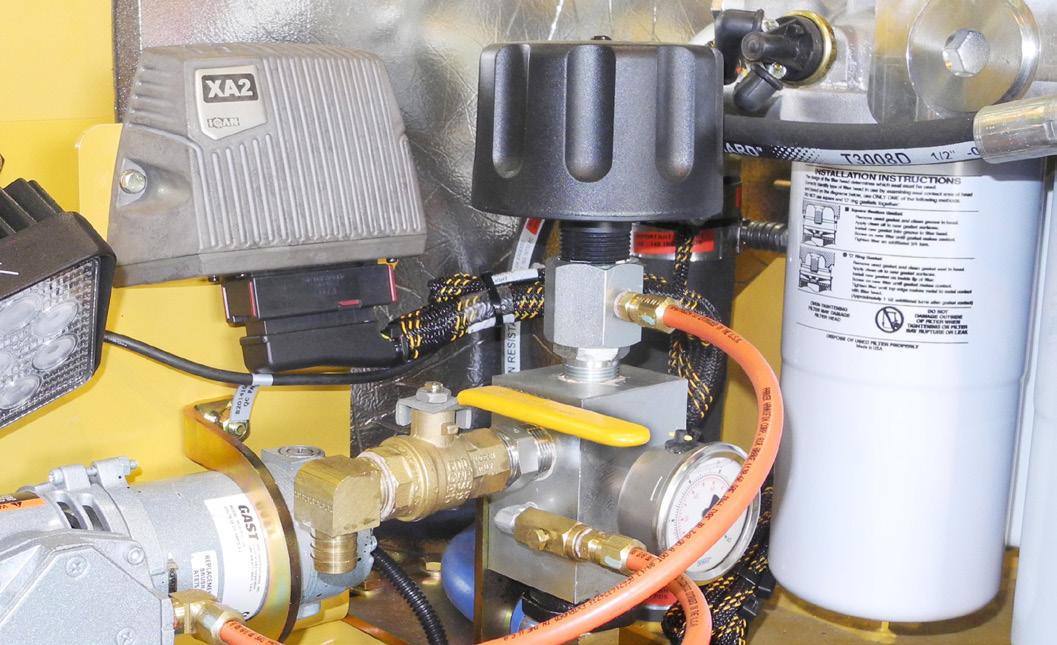
1 minute read
FIRE PREVENTION GUIDELINES......................................................................................................................1
Safety
• Fluid leaks, under pressure, may not be visible.
When searching for leaks, wear work gloves and use a wrench or piece of wood to move hydraulic hoses.
Do not grab hold of hydraulic hoses. Wear safety goggles for eye protection.
IMPORTANT!
PRESSURIZED HYDRAULIC TANK 35 KPA (5 PSI) MAXIMUM 7 KPA (1 PSI) NOMINAL
A B
C
LX830D-030
A Air Vent Valve
B Open/Close Lever
C Pressure Gauge Before servicing the hydraulic system, release the air pressure from the tank using the air vent valve. Eye protection is required. Refer to HYDRAULIC OIL TANK PRESSURIZATION INSTRUCTIONS in SECTION 3.
Handle Perpendicular to Valve (shown) = Valve Closed Handle Parallel to Valve = Valve Open After service is completed, close the air vent valve.
Pressure can be maintained in a hydraulic system long after the power source and pump have been shut down.
Tigercat 822D/L822D Feller Buncher

830-07 C A B
D A B
830-08
Parking the Boom
A Stick Cylinder Fully Extended B Hoist Boom Fully Retracted C Head Flat on Ground D Tip of Stick Boom Fully Supported
• Lower the attachment to the ground, turn OFF the engine and relieve trapped pressure before performing work on components or disconnecting any hoses (Parking the Boom). The accumulators will self drain within two minutes of turning OFF the engine.
• Explosive release of fluids from pressurized cooling systems can cause serious burns.
• Turn OFF the engine. Only remove the coolant fill cap when it is cool enough to touch with bare hands.
Slowly loosen the fill cap to the first stop to relieve pressure before removing the fill cap completely.





